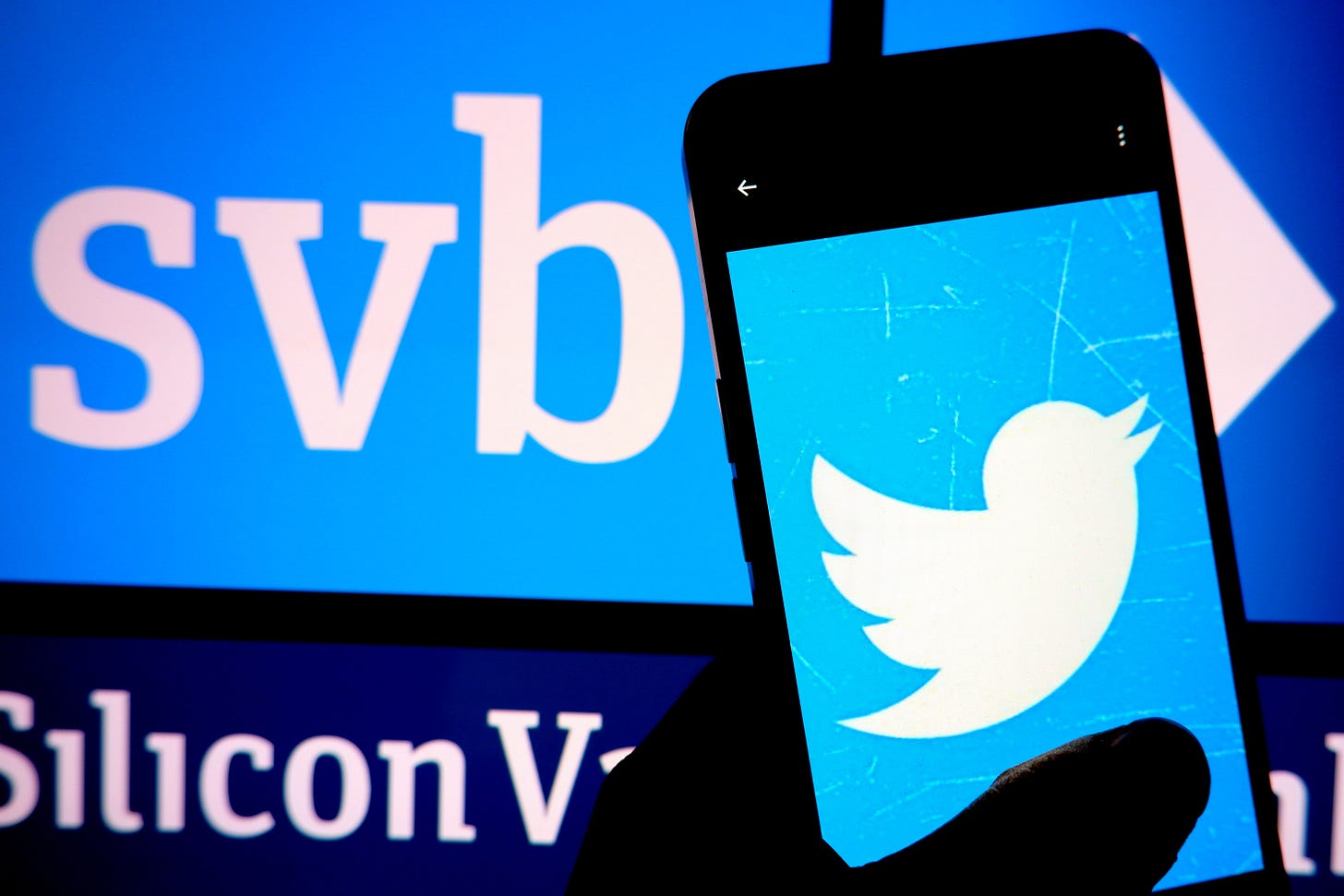When bank runs go viral
An interview with the co-author of a new study on how social media amplified the Silicon Valley Bank collapse -- and the new risks it poses to the financial system
Twitter isn’t real life, right? Or is it?
As Silicon Valley Bank melted down, it was said (often on Twitter itself) that Twitter discourse had helped fan the flames. Nervous depositors and investors vented their fears on Twitter; they egged on each other’s fears; they ushered others into becoming afraid if they weren’t already; and, with the same viral network effects that brought you the Distracted Boyfriend Meme and the blue-or-gold dress (blue), they collectively talked themselves into withdrawing their money and fueling a massive bank run.
Was this a one-off? Or were we staring into the abyss of a dangerous new phenomenon — the viral bank run?
I’ve been fascinated by these questions, but there has been more heat than light on the subject. That is, until I came across an important and timely new scholarly paper meticulously examining the mechanics of how mere Twitter twittering could amplify something as serious and material as a bank run. The scholars — J. Anthony Cookson, Corbin Fox, Javier Gil-Bazo, Juan F. Imbet, and Christoph Schiller — conclude that “SVB faced a novel channel of bank run risk that is unique to the social media era.”
That caught my eye. So I reached out to them, and below is my conversation with Christoph Schiller, who was kind enough to explain it to me like I’m ten years old.
A reminder: The Ink is funded by readers like you. If you enjoy these posts, subscribe today!
On Twitter and bank runs: a conversation with Christoph Schiller
You are a co-author of a new scholarly paper looking at how Twitter discourse fueled the run on Silicon Valley Bank. But before we go into that, can you remind The Ink’s readers what a bank run is in its most basic form? And why it poses such a societal danger?
A bank run occurs when depositors believe that other depositors will start to withdraw their funds from a bank. In that case, the bank may not hold enough liquid cash on hand to satisfy all requests for withdrawals, which creates an incentive to “run” and be first in line at the bank counter. The danger here is that in theory this can destabilize even healthy banks, because all it takes to create a run is a coordinated shift in beliefs among depositors. Banks are a fundamental backbone of the economy that support everything from business loans to mortgages and destabilizing that can have major repercussions for growth, welfare, etc. (see the financial crisis in 2008).
OK. So now enter social media. Tell us what you found happened in the case of Silicon Valley Bank, when an extremely online depositor base was worrying about its money but also talking online about worrying about its money — and chaos ensued.
We found evidence that social media amplified the bank run on SVB and created spillover effects to other banks during the run period in March 2023. We did this by grouping banks by their exposure to social media — how much does Twitter talk about a given bank — in the time before the actual run in January and February of 2023.



